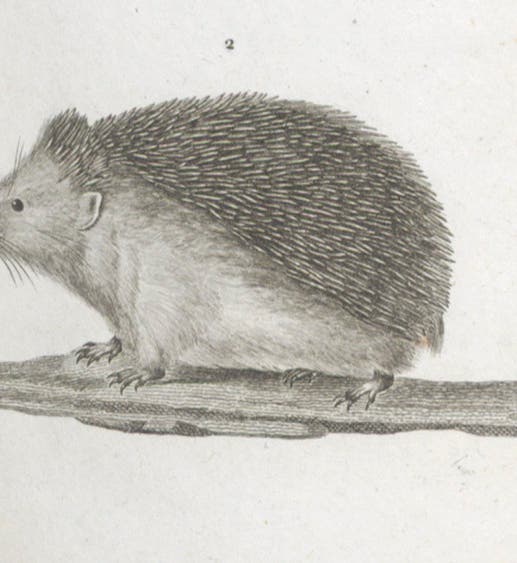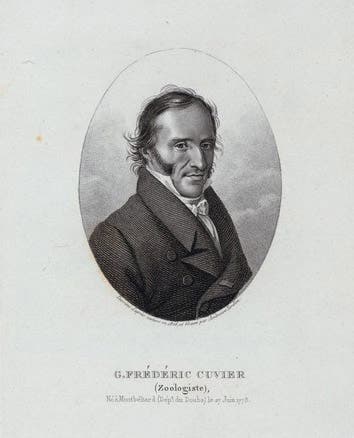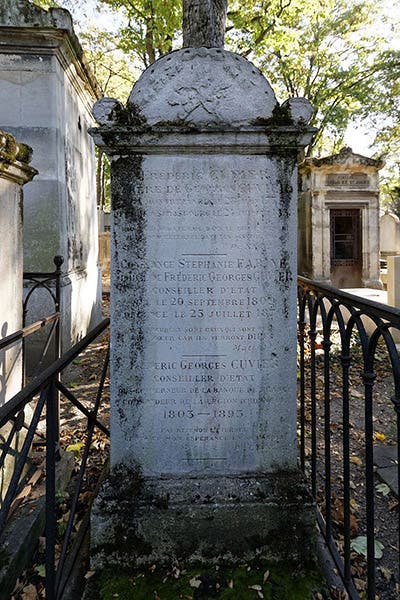Scientist of the Day - Frédéric Cuvier
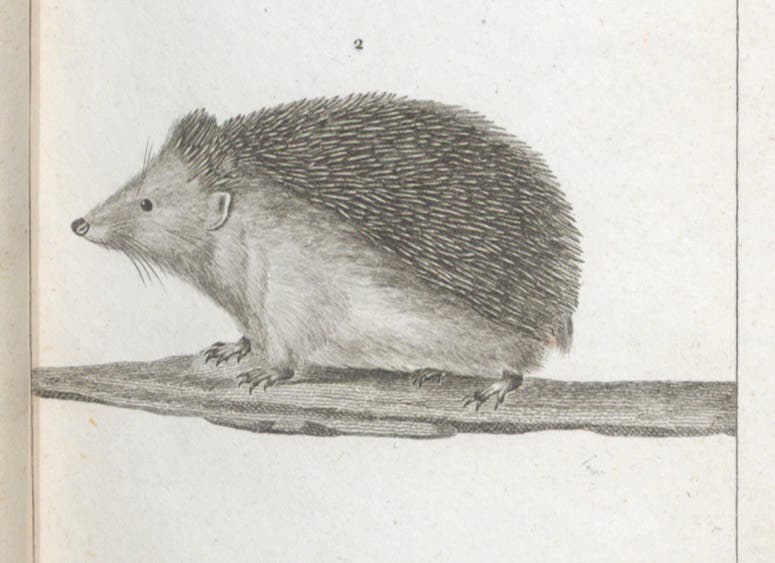
Hérisson (hedgehog), detail of engraving by Jean-Gabriel Prêtre, in Dictionnaire des sciences naturelles, ed. by Frédéric Cuvier, plate vol.7, 1816-30 (Linda Hall Library)
Georges-Frédéric Cuvier, a French naturalist, was born June 28, 1773, in Montbéliard. He was the younger brother by four years of the famous anatomist and zoologist Georges Cuvier, for which reason, presumably, he published under the name Frédéric. Unlike his older brother, Frédéric got a slow start on the road to becoming a professional naturalist, and had considerable help getting a foothold in Paris from Georges, who ensured Frédéric’s appointment as head keeper at the menagerie (zoo) of the Paris Museum of Natural History. But once established, he did very well for himself and his profession, and he eventually secured a professorship (in comparative physiology) at the Museum.
The principal publication by Frédéric Cuvier that we have in our library is one for which he was general editor-in-chief and contributing author. It is called Dictionnaire des sciences naturelles, and it was published in 60 text volumes and 12 volumes of plates between 1816 and 1830. Seventy-two volumes sounds like a lot, and it is, but these were small octavo volumes, so it was not quite so volume-inous as, say, the Encyclopédie edited in the previous century by Denis Diderot. Still, soliciting and editing entries from scores of colleagues requires a unique combination of tact, diplomacy, glower, and grit, and Cuvier seems to have done his job well. We show the list of authors that accompanied each volume, with Cuvier’s name at the bottom as editor, and also indicating that the articles signed (F.C.) were written by Frédéric.
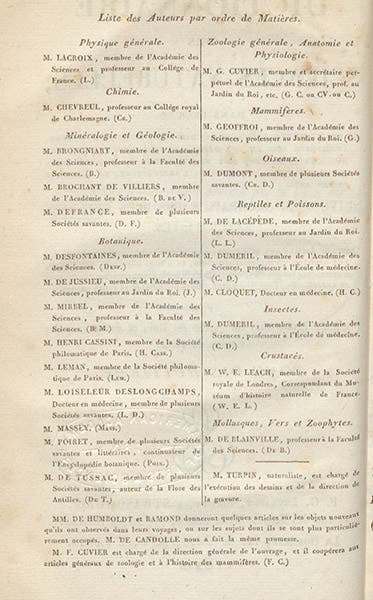
List of authors who contributed to the work and their identifying initials; Frédéric Cuvier is listed at the bottom as general editor, with initials (F.C.), verso of title page of each volume (this one vol. 18) (Linda Hall Library)

Sarigue (opossum), engraving by Jean-Gabriel Prêtre, in Dictionnaire des sciences naturelles, ed. by Frédéric Cuvier, plate vol.7, 1816-30 (Linda Hall Library)
The set is quite handsome, especially when hand-colored, as many sets were, but ours is not. The result was authoritative enough that Robert Fitzroy and Charles Darwin chose to take a set along on the voyage of HMS Beagle in 1831. Since Darwin did not know much about vertebrate zoology when he left, he may have had his first experiences with coatis, pacas, and opossums in the volumes of the Dictionnaire.
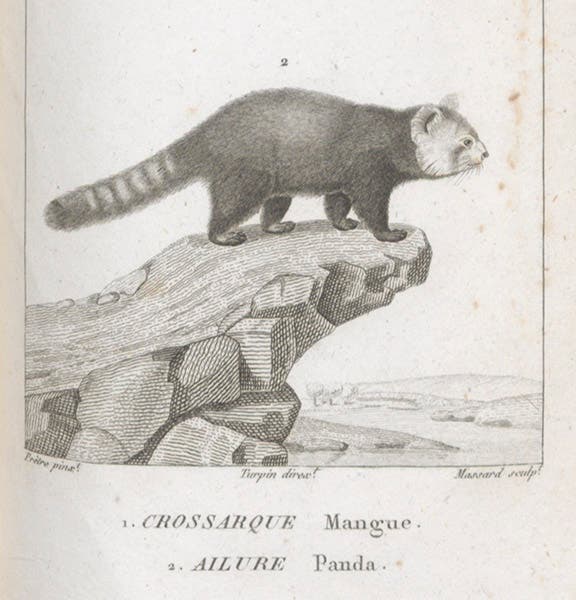
Ailure (red panda), detail of engraving by Jean-Gabriel Prêtre, in Dictionnaire des sciences naturelles, ed. by Frédéric Cuvier, plate vol.7, 1816-30 (Linda Hall Library)
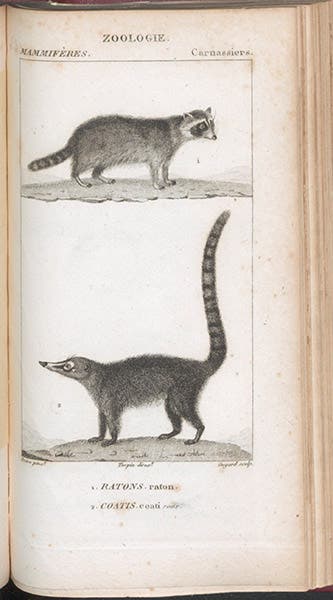
Ratons (raccoon) and coati, engraving by Jean-Gabriel Prêtre, in Dictionnaire des sciences naturelles, ed. by Frédéric Cuvier, plate vol.7, 1816-30 (Linda Hall Library)
Frédéric called himself a zologist in his portrait (second image), with a specialty in mammals, but he did not write most of the mammal entries in the Dictionnaire – those were provided by Étienne Geoffroy Saint-Hilaire. But Frédéric did write some, such as the Hérisson (hedgehog), and he compiled the plate volume on mammals, which in our set is volume 7 (the plate volumes are not actually numbered on the title pages), so our images today were drawn from this volume. We lead with the hedgehog, because that is our Library’s mascot, and the masthead animal on our house periodical, the Linda Hall Library Hedgehog. We also show some of the South American mammals that Fitzroy and Darwin would encounter between 1831 and 1834. The illustrator was Jean-Gabriel Prêtre, a prolific artist who illustrated many of the zoological publications of the Paris Museum.
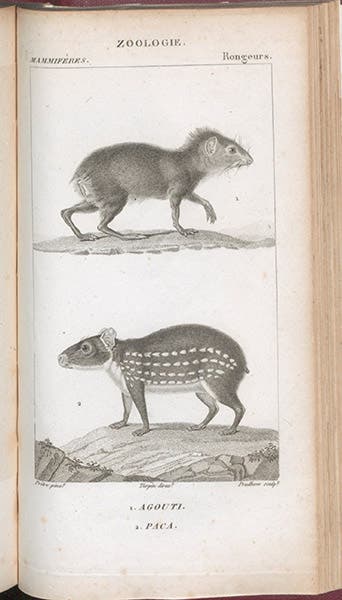
Agouti and paca, engraving by Jean-Gabriel Prêtre, in Dictionnaire des sciences naturelles, ed. by Frédéric Cuvier, plate vol.7, 1816-30 (Linda Hall Library)
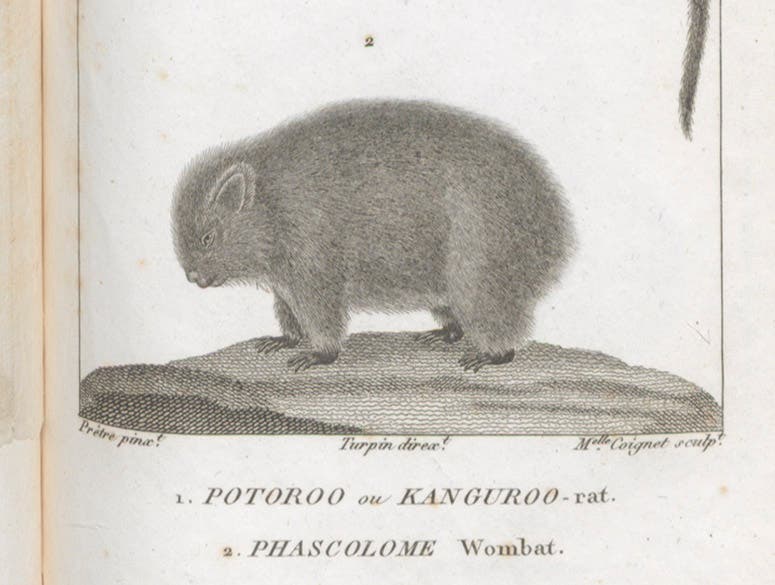
Phascolome (wombat), detail of engraving by Jean-Gabriel Prêtre, in Dictionnaire des sciences naturelles, ed. by Frédéric Cuvier, plate vol.7, 1816-30 (Linda Hall Library)
We also feature the ailure (fifth image), which is known to English-speakers as the red panda. Cuvier was the zoologist who named and first described the red panda in 1825, working from specimens sent back from China. There is no description of the red panda in the text, because the A-Alz volume, vol. 1, was published in 1816, before the ailure was named and described. But he makes a charming appearance in an engraving in plate vol. 7. Equally charming is the phascolome (wombat), which we could not resist including, although I don’t think Darwin ever saw one when the Beagle stopped in Australia (eighth image).
Frédéric Cuvier died on July 24, 1838, at the age of 65. He was buried in Pere Lachaise cemetery in Paris (ninth image).
William B. Ashworth, Jr., Consultant for the History of Science, Linda Hall Library and Associate Professor emeritus, Department of History, University of Missouri-Kansas City. Comments or corrections are welcome; please direct to ashworthw@umkc.edu.

